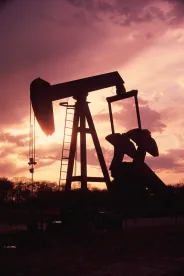New methods of natural gas and oil production have unlocked new supplies from shale formations around the United States over the last two decades, and these new supply sources have brought about rapid changes in the transportation infrastructure needed to bring these supplies to market. Pipeline developers – whether moving oil, natural gas or natural gas liquids (NGL) – have sought to keep up with the increasing volume and changing production locations by building new infrastructure and repurposing existing pipelines. The origin points for new and repurposed pipelines are often in areas historically lacking large-scale pipeline infrastructure. In some cases new production locations were previously destinations or through-points for oil, gas and NGL pipelines before the shale production boom.
For example, while Appalachia was an original oil and gas production area when the industry first developed, it has for many years primarily been viewed as a “market area.” Advances in production from the Marcellus Shale, however, have created a massive gas and NGL supply source in the midst of the market. To enable new oil and gas supplies to reach downstream refineries, processing facilities and markets, there is now a need for new pipeline development, changes to the direction of flow on many existing pipelines, and the repurposing of other existing gas infrastructure for NGLs.
INFRASTRUCTURE REQUIRED
According to the U.S. Energy Information Administration (EIA), over the past several years, Gulf of Mexico gas production has fallen, while onshore gas production has grown. The EIA also says on the crude oil side, Gulf of Mexico production fell from a relative high in the middle of the last decade and has since remained flat. On the other hand, crude oil production in North Dakota (mainly in the state’s Bakken shale) has increased dramatically since 2005, rising from around 3 million barrels per month to more than 20 million barrels per month at the end of 2012, according to the EIA. This shift in production areas, away from the traditional offshore oil and gas plays towards new onshore sources, requires changes in the pipeline infrastructure grid to move production from new sources to refineries and markets.
PLENTY OF CHALLENGES
The first step to successfully managing the challenges associated with pipeline development is to understand the varying regulatory frameworks in which pipelines must operate. Interstate oil and NGL pipelines are regulated by the Federal Energy Regulatory Commission (FERC) under a different statutory regime than natural gas pipelines. Over the last 50 years, the development of natural gas pipelines has been more prevalent than that of oil and NGL pipelines. As a result, in the pipeline development industry there tends to be more familiarity with gas pipeline regulation than with oil and NGL pipeline regulation. To a certain degree – especially in connection with the conversion of existing gas pipelines for oil or NGL transportation – knowledge of gas pipeline regulation is intertwined with the successful development of an oil or NGL pipeline.
At the same time, there is a temptation for those who are more familiar with natural gas pipeline development to let their understanding of those regulations guide their strategies for oil and NGL pipeline development. This temptation should be resisted. To navigate the regulatory and commercial hurdles associated with the development of oil and NGL pipelines, it is crucial to understand the differences between FERC’s regulatory regime for such pipelines compared to natural gas pipelines. At the same time, new natural gas pipeline infrastructure is required to bring the significant supplies of domestic natural gas to market, and pipeline developers must be increasingly able to navigate both regulatory frameworks.
More and more frequently, pipeline developers are seeking to convert existing natural gas pipelines to move oil or NGLs from a nearby production area or, in some instances, to reverse the directional flow on a natural gas line to move oil or gas away from a recently emerged production area. The conversion or reversal of an existing interstate natural gas pipeline requires prior approval from FERC to “abandon” the existing service. Attempts to abandon such service can become contentious because existing shippers with an interest in maintaining their service have the right to file their objections at FERC to any proposed abandonment. If shippers raise objections, FERC will carefully consider the effects of the abandonment on those shippers and downstream markets in weighing whether to grant the abandonment. Pipeline developers can mitigate the regulatory uncertainty created by a contentious abandonment proceeding at FERC by planning ahead and working closely with affected shippers to address negative effects where possible and ensure continuity of service where required. By working with shippers on the front end – before abandonment authority is formally sought at FERC – pipeline developers have a better chance of successfully obtaining the regulatory approvals they require.
In contrast to abandonment, developing a new interstate natural gas pipeline requires a detailed showing to FERC that the project will serve the “public convenience and necessity.” As with any proposed abandonment of an interstate natural gas pipeline, the construction of a new gas pipeline requires FERC approval and opens the door for landowners, environmental organizations, local governments, and others to express their opposition to a project. FERC must factor in this opposition when determining whether to approve a particular project. Pipeline owners and developers that work proactively with affected stakeholders before FERC approval is sought are often able to mitigate issues before they become obstacles. Unfortunately, no amount of mitigation can appease stakeholders who are simply opposed to any energy or pipeline infrastructure as a matter of principle. To manage such opponents, pipeline owners and developers must ensure development of a strong administrative record that supports the project.
The ability to show the market benefits of a proposed project, the upside for consumers, and the steps that have been taken to mitigate environmental impacts will go a long way towards fending off increasingly inevitable legal challenges.
In contrast with natural gas pipelines, oil and NGL pipelines do not require pre-approval from FERC to be constructed and operated – unless it is a pipeline utilizing a new crossing at the international border of Mexico or Canada, which requires federal preapproval. However, oil and NGL pipeline development can trigger a host of other federal regulatory requirements, including environmental requirements. Moreover, the construction of oil and NGL pipelines often requires pre-approval from state regulatory bodies. Because states differ in the ways that they regulate pipeline development, the regulatory approvals associated with an oil or NGL pipeline project can sometimes be less transparent and predictable than the FERC approval process for natural gas pipelines.
New pipeline projects, regardless of product, also typically require significant financial commitments from prospective shippers in order to secure financing and regulatory approvals. Oil and liquids pipelines face somewhat unique challenges because they are regulated by FERC as common carriers. This means that all qualified shippers are entitled to some amount of access to service and that service must be provided on a non-discriminatory basis. These requirements can complicate an oil or NGL pipeline’s efforts to incentivize shippers to make significant financial commitments to ship or pay for a certain quantity of product once the pipeline commences operation, which may not occur for several years. In exchange for committing an assured revenue stream to the planned project, such shippers (often referred to as anchor shippers) typically seek guarantees that their volumes will not be subject to curtailment, or that they will pay a more favorable rate compared to uncommitted shippers.
In recognition of the need for more oil and NGL pipeline development, FERC has approved innovative capacity allocation and rate structures in recent years, providing pipeline developers with additional tools to secure anchor shippers to support the development of pipeline infrastructure.
The intersection of commercial realities and federal regulation can be tricky for pipeline developers to navigate, especially in light of the differences between the ways that natural gas pipelines, and oil and NGL pipelines are regulated.
On the bright side, FERC has been receptive to commercial structures that facilitate the necessary economic support to backstop pipeline development. At the same time, opponents of energy infrastructure continue to aggressively seek to derail projects.
To maximize the chances of development success and mitigate development risk, it is critical to engage early with regulators of all stripes as well as with other stakeholders to structure the project to meet the applicable regulatory requirements while also meeting commercial objectives.




 />i
/>i
